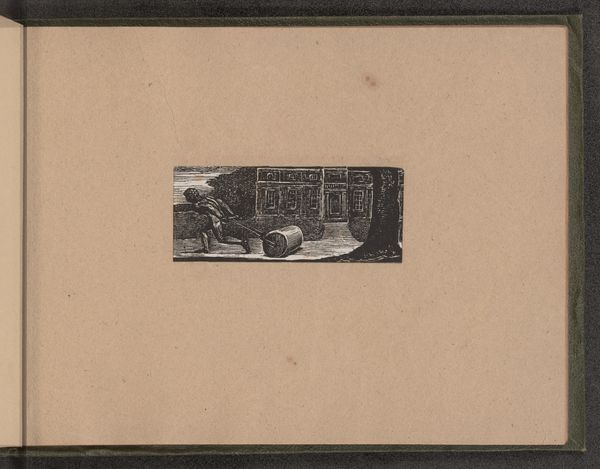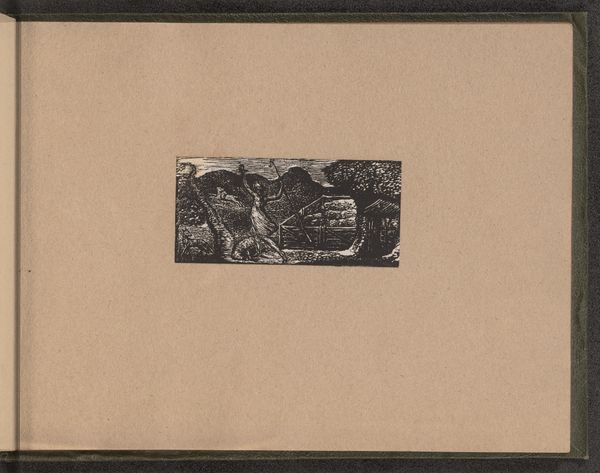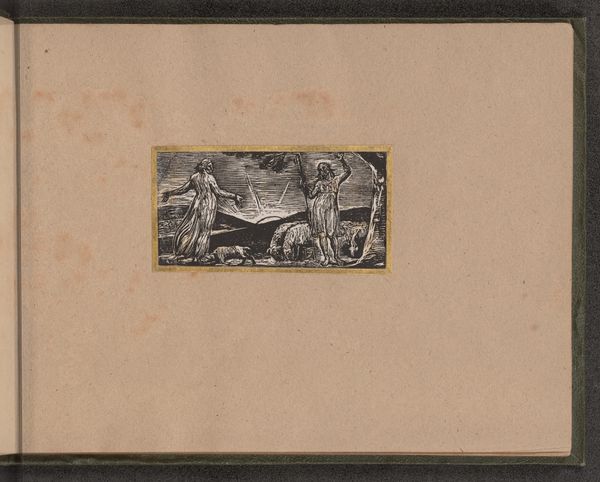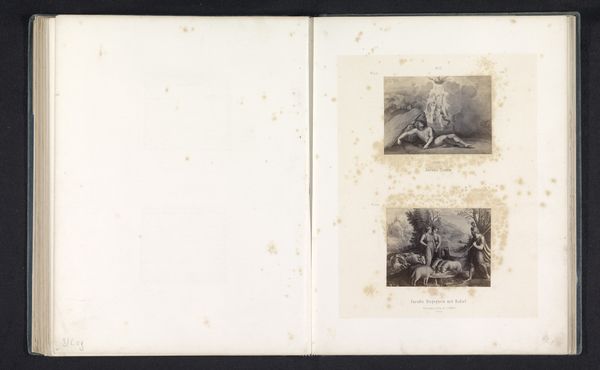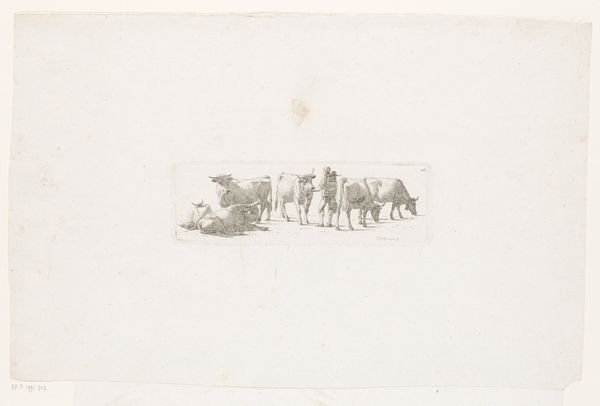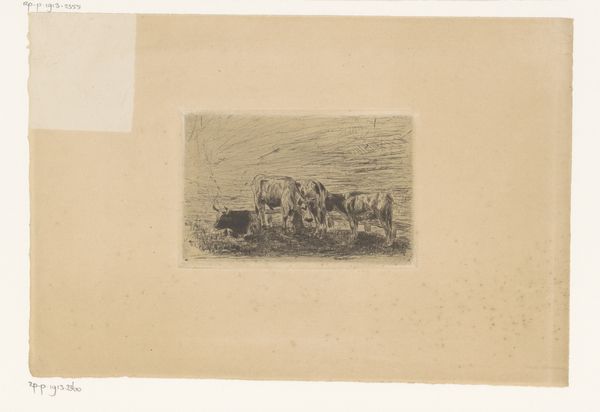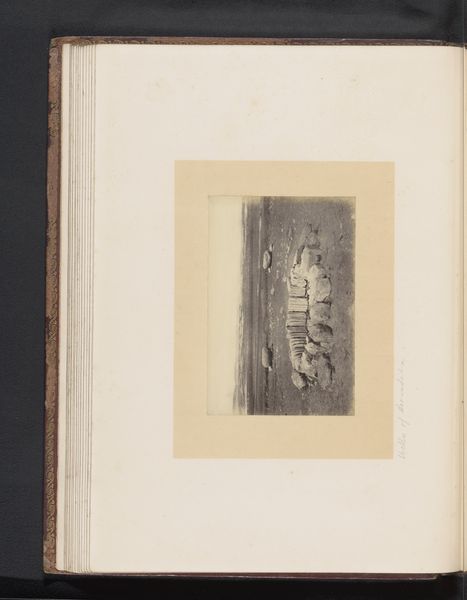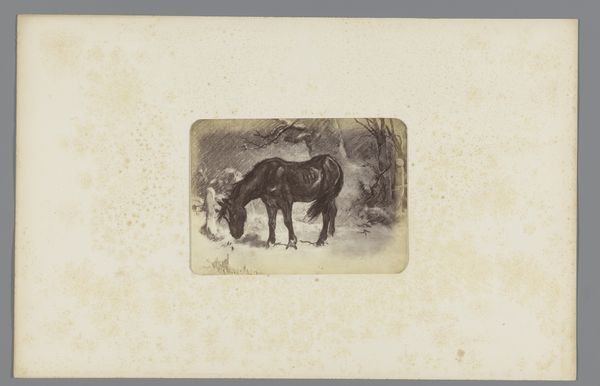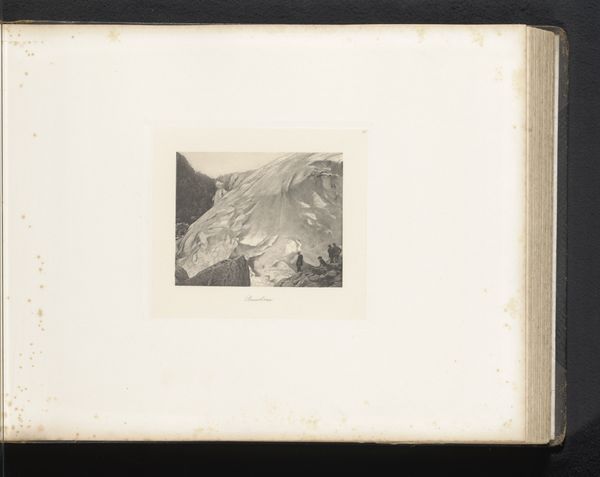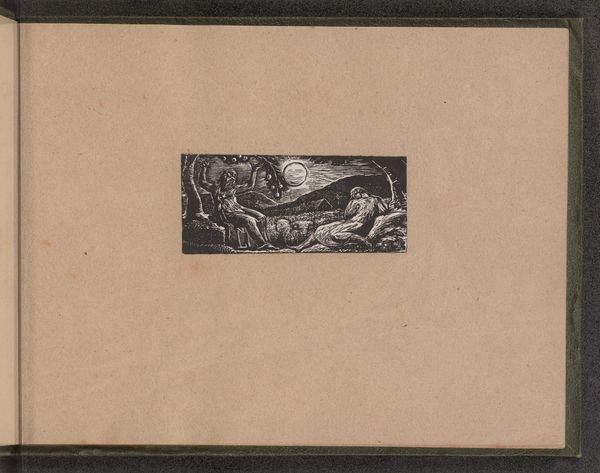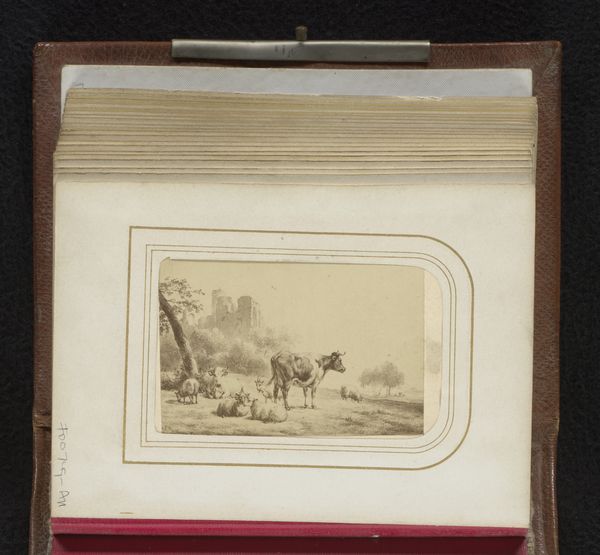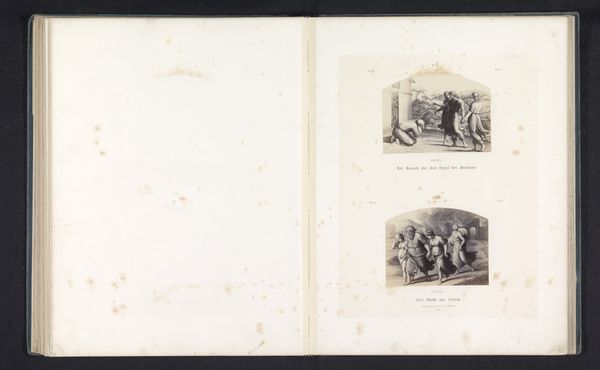
drawing, print, ink
#
drawing
# print
#
landscape
#
figuration
#
ink
#
romanticism
#
watercolor
Copyright: National Gallery of Art: CC0 1.0
Editor: So, here we have William Blake’s print, *Return of the Shepherd*, made in 1821. It looks like ink on paper, and there’s this very peaceful scene of a figure leading cattle silhouetted against a sunrise. It feels very pastoral. What do you see in this piece? Curator: Beyond the pastoral scene, I see Blake grappling with societal hierarchies through the lens of labor and nature. Consider the shepherd – not a powerful landowner, but a worker. The rising sun might symbolize not just a new day, but also a potential awakening of social consciousness. What power dynamics do you perceive here, especially considering Blake’s radical views? Editor: I guess I hadn’t thought of it like that. It’s easy to get caught up in the idyllic imagery, but knowing Blake, I see your point. How do the figures—both human and animal—play into his socio-political commentary? Curator: Look at the positioning. The shepherd leads, but the cattle are substantial, almost dominating the composition. Blake often used animals to represent marginalized groups. Is he suggesting here an inherent strength, a potential for the oppressed to rise? And how does the print medium itself—a form of accessible art—contribute to Blake's activist message? Editor: That’s fascinating, the idea of accessible art as activism. I was stuck on the aesthetic. Seeing it now, it speaks volumes beyond just a simple scene. It gives me a fresh perspective. Curator: Indeed. It shows us that even the simplest scenes can carry profound messages when viewed through the lens of social awareness and historical context.
Comments
No comments
Be the first to comment and join the conversation on the ultimate creative platform.
